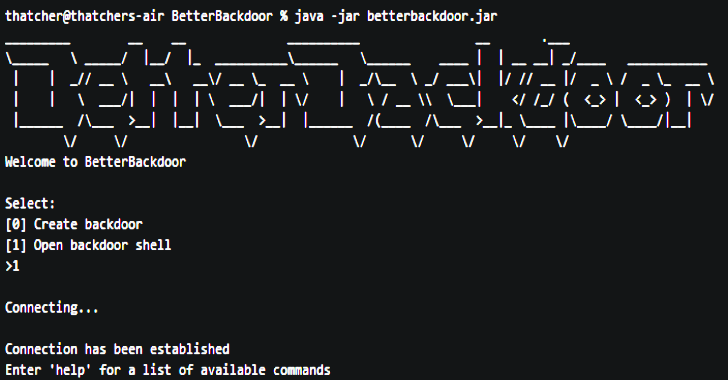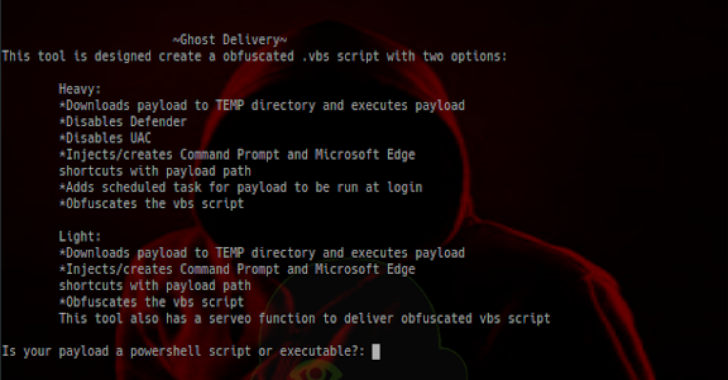RAUDI (Regularly and Automatically Updated Docker Images) automatically generates and keep updated a series of Docker Images through GitHub Actions for tools that are not provided by the developers.
What is RAUDI
RAUDI is what will save you from creating and managing a lot of Docker Images manually. Every time a software is updated you need to update the Docker Image if you want to use the latest features, the dependencies are not working anymore.
This is messy and time-consuming.
Don’t worry anymore, we got you covered.
You may either fork this repo and use the GitHub Workflow yourself or use it locally (and manage its execution the way you want).
If you want to fork this repo you also have to set up some secrets to be able to push your images on your personal Docker Hub account. Two GitHub secrets must be set:
- DOCKER_USER: Your Docker Hub Username;
- DOCKER_API_TOKEN: Your Docker Hub Password or API Token.
After setting those secrets you have to edit the organization variable set in the tools/main.py file since it is configured to push on the Docker Hub for SecSI.
That’s all guys: go to Action, enable it for your forked repo, wait until midnight, and the Workflow will do the heavy work!
This repo can also be executed locally. The requirements to be met are the following:
- Python 3.x
- Docker (with BuildX)
Here is the documentation for working with BuildX: https://docs.docker.com/buildx/working-with-buildx/
The setup phase is pretty straightforward, you just need the following commands:
git clone https://github.com/cybersecsi/RAUDI
cd RAUDI
pip install -r requirements.txt
You’re ready to go!
To run the test you need to install pytest with the command pip install pytest (it is not in requirements.txt since it is needed only for testing purposes) and then you may run:
pytest -s
or
python -m pytest -s
to run the tests.
RAUDI can build and push all the tools that are put into the tools directory. There are different options that can be used when running it. Before using it locally you should create a .env file (you can just copy the .env.sample file) and add your GitHub Personal Access Token to avoid Rate Limiting. For unauthenticated users GitHub allows up to 60 requests per hour, while authenticated users are allowed up to 15.000 requests per hour. For this reason we advice you to add it! You can also create a personal access token without any scope since anything we do is read some info for every GitHub repo.
In this mode RAUDI tries to build all the tools if needed. The command to run it is simply:
python3 ./raudi.py –all
Single Build
In this mode RAUDI tries to build only the specified tool. The command in this case is:
python3 ./raudi.py –single
tool_name MUST be the name of the directory inside the tools folder.
Since the tests parameter has been added to the configuration structure of the tool is can be helpful to test if the inserted commands do return a 0 status code. The command to test a specific tool is:
python3 ./raudi.py –test
tool_name MUST be the name of the directory inside the tools folder.
If you want to know the available tools you can run this command:
python3 ./raudi.py –list
Bootstrap tool
If you want to quickly add a new tool folder starting from one of the available templates you can run this command:
python3 ./raudi.py –bootstrap
Options
| Option | Description | Default Value |
|---|---|---|
| –push | Whether automatically push to Docker Hub | False |
| –remote | Whether check against Docker Hub instead of local Docker before build | False |
| –force | Whether build or not if an image with the same tagname has been found | False |
This is the current list of tools that have been added. Those are all tools that do not have an official Docker Image provided by the developer:
| Name | Docker Image | Source |
|---|---|---|
| 3proxy | secsi/3proxy | https://github.com/3proxy/3proxy |
| Altdns | secsi/altdns | https://github.com/infosec-au/altdns |
| Apktool | secsi/apktool | https://github.com/iBotPeaches/Apktool |
| Arjun | secsi/arjun | https://github.com/s0md3v/Arjun |
| bfac | secsi/bfac | https://github.com/mazen160/bfac |
| CloudFail | secsi/cloudfail | https://github.com/m0rtem/CloudFail |
| CMSeeK | secsi/cmseek | https://github.com/Tuhinshubhra/CMSeeK |
| Crowbar | secsi/crowbar | https://github.com/galkan/crowbar |
| Dalfox | secsi/dalfox | https://github.com/hahwul/dalfox |
| datasploit | secsi/datasploit | https://github.com/DataSploit/datasploit |
| dex2jar | secsi/dex2jar | https://github.com/pxb1988/dex2jar |
| dirb | secsi/dirb | http://dirb.sourceforge.net/ |
| dirhunt | secsi/dirhunt | https://github.com/Nekmo/dirhunt |
| dirsearch | secsi/dirsearch | https://github.com/maurosoria/dirsearch |
| dnscan | secsi/dnscan | https://github.com/rbsec/dnscan |
| Dorks Eye | secsi/dorks-eye | https://github.com/BullsEye0/dorks-eye |
| dvcs-ripper | secsi/dvcs-ripper | https://github.com/kost/dvcs-ripper |
| ExifTool | secsi/exiftool | https://github.com/exiftool/exiftool |
| EyeWitness | secsi/eyewitness | https://github.com/FortyNorthSecurity/EyeWitness |
| fast-recon | secsi/fast-recon | https://github.com/DanMcInerney/fast-recon |
| ffuf | secsi/ffuf | https://github.com/ffuf/ffuf |
| fierce | secsi/fierce | https://github.com/mschwager/fierce |
| Findsploit | secsi/findsploit | https://github.com/1N3/Findsploit |
| GetJS | secsi/getjs | https://github.com/003random/getJS |
| Gitrob | secsi/gitrob | https://github.com/michenriksen/gitrob |
| GitTools | secsi/gittools | https://github.com/internetwache/GitTool |
| gobuster | secsi/gobuster | https://github.com/OJ/gobuster |
| GoogD0rker | secsi/googd0rker | https://github.com/ZephrFish/GoogD0rker |
| GoSpider | secsi/gospider | https://github.com/jaeles-project/gospider |
| Ground control | secsi/ground-control | https://github.com/jobertabma/ground-control |
| Hakrawler | secsi/hakrawler | https://github.com/hakluke/hakrawler |
| hakrevdns | secsi/hakrevdns | https://github.com/hakluke/hakrevdns |
| hashID | secsi/hashid | https://github.com/psypanda/hashID |
| httprobe | secsi/httprobe | https://github.com/tomnomnom/httprobe |
| hydra | secsi/hydra | https://github.com/vanhauser-thc/thc-hydra |
| impacket | secsi/impacket | https://github.com/SecureAuthCorp/impacket |
| JoomScan | secsi/joomscan | https://github.com/OWASP/joomscan |
| The JSON Web Token Toolkit | secsi/jwt_tool | https://github.com/ticarpi/jwt_tool |
| knock | secsi/knockpy | https://github.com/guelfoweb/knock |
| LFI Suite | secsi/lfisuite | https://github.com/D35m0nd142/LFISuite |
| LinkFinder | secsi/linkfinder | https://github.com/GerbenJavado/LinkFinder |
| MASSCAN | secsi/masscan | https://github.com/robertdavidgraham/masscan |
| MassDNS | secsi/massdns | https://github.com/blechschmidt/massdns |
| Memcrashed DDoS Exploit | secsi/memcrashed | https://github.com/649/Memcrashed-DDoS-Exploit |
| Netify | secsi/netifyd | https://gitlab.com/netify.ai/public/netify-agent |
| nikto | secsi/nikto | https://github.com/sullo/nikto |
| nmap | secsi/nmap | https://github.com/nmap/nmap |
| oxml_xxe | secsi/oxml_xxe | https://github.com/BuffaloWill/oxml_xxe |
| Pagodo | secsi/pagodo | https://github.com/opsdisk/pagodo |
| photon | secsi/photon | https://github.com/s0md3v/Photon |
| PivotSuite | secsi/pivotsuite | https://github.com/RedTeamOperations/PivotSuite |
| psalm | secsi/psalm | https://github.com/vimeo/psalm |
| pureDNS | secsi/puredns | https://github.com/d3mondev/puredns |
| Race The Web | secsi/race-the-web | https://github.com/TheHackerDev/race-the-web |
| RestfulHarvest | secsi/restfulharvest | https://github.com/laramies/theHarvester |
| Retire.js | secsi/retire | https://github.com/RetireJS/retire.js |
| RouterSploit | secsi/routersploit | https://github.com/threat9/routersploit |
| Sandcastle | secsi/sandcastle | https://github.com/0xSearches/sandcastle |
| scanless | secsi/scanless | https://github.com/vesche/scanless |
| seclists | secsi/seclists | https://github.com/danielmiessler/SecLists |
| spyse.py | secsi/spysepy | https://github.com/zeropwn/spyse.py |
| sqlmap | secsi/sqlmap | https://github.com/sqlmapproject/sqlmap |
| spidy | secsi/spidy | https://github.com/rivermont/spidy |
| Striker | secsi/striker | https://github.com/s0md3v/Striker |
| Subfinder | secsi/subfinder | https://github.com/projectdiscovery/subfinder |
| Subjack | secsi/subjack | https://github.com/haccer/subjack |
| Sublist3r | secsi/sublist3r | https://github.com/aboul3la/Sublist3r |
| theHarvester | secsi/theharvester | https://github.com/laramies/theHarvester |
| WAFW00F | secsi/wafw00f | https://github.com/EnableSecurity/wafw00f |
| waybackpy | secsi/waybackpy | https://github.com/akamhy/waybackpy |
| WhatWeb | secsi/whatweb | https://github.com/urbanadventurer/WhatWeb |
| xray | secsi/xray | https://github.com/evilsocket/xray |
| XSSer | secsi/xsser | https://github.com/epsylon/xsser |
| XSSSNIPER | secsi/xsssniper | https://github.com/gbrindisi/xsssniper |
| X SStrike | secsi/xsstrike | https://github.com/s0md3v/XSStrike |
| XXEinjector | secsi/xxeinjector | https://github.com/enjoiz/XXEinjector |
Every tool in the tools directory contains at least two file:
- config.py
- Dockerfile.
- README.md (optional README for Docker Hub)
If you want to add a new tool you just have to create a folder for that specific tool inside the tools directory. In this folder you have to insert the Dockerfile with defined build args to customize and automate the build. Once you created the Dockerfile you have to create a config.py in the same directory with a function called get_config(organization, common_args). Be careful: the function MUST be called this way and MUST have those two parameters (even if you do not use them). The returning value is the config for that specific tool and has the following structure:
config = {
‘name’: organization+’/’,
‘version’: ”, # Should be an helper function
‘buildargs’: {
},
‘tests’: []
}
The four keys are:
- name: the name of the Docker Image (e.g. secsi/<tool_name>);
- version: the version number of the Docker Image. For this you may use a helper function that is able to retrieve the latest available version number (look at tools/ffuf for an example);
- buildargs: a dict to specify the parts of the Docker Images that are subject to updates (again: look at tools/ffuf for an example);
- tests: an array of tests (usually just a simple one like ‘–help’).
After doing so you are good to go! Just be careful that the name of the tool MUST BE THE SAME as the directory in which you placed its Dockerfile.
There is a NAMING CONVENTION for the versions: use only DOTS and DIGITS; so please remove any trailing ‘v’ from the version in the specific config.py (for a working example check tools/dirsearch/config.py).
To get the latest versions and information about tools and base images a set of helpers has been implemented. If you want to add a new tool you should use these helpers to have a Docker Image that is automatically updated by RAUDI.
get_latest_pip_version
This helper is used to retrieve the latest version of a pip package. All it takes is the name of the package and returns the version number. Example:
VERSION = helper.get_latest_pip_version(package_name)
get_latest_github_release
This helper is used to retrieve information about a GitHub repo that uses Releases and has multiple kind of assets (e.g. executables for different OSes). This helper takes the repo (in the format user/repo) and a target string to be able to identify the correct asset to download. It returns a dict with two keys (url and version). Example:
VERSION = helper.get_latest_github_release(“user/repo”, “linux_amd64”)
get_latest_github_release_no_browser_download
This helper is used to retrieve information about a GitHub repo that uses Releases and has only the source code (which means there is a zipball and a tarball). This helper takes the repo (in the format user/repo) and returns a dict with two keys (url and version). Example:
VERSION = helper.get_latest_github_release_no_browser_download(“user/repo”)
get_latest_github_commit
This helper is used to retrieve information about a GitHub repo that doesn’t use Tags or Releases. In this case, the goal is to retrieve the latest commit. This helper takes the repo (in the format user/repo) and returns a string representing the date of the last commit in the format YYYYYMMDD.
VERSION = helper.get_latest_github_commit(“user/repo”)
Examples
This section provides examples for the currently added Network Security Tools. As you can see the images do provide only the tool, so if you need to use a wordlist you need to mount it.
docker run -it –rm secsi/
Specific example
docker run -it –rm -v : secsi/dirb /
How to Pronounce
We are italians, so we probably pronounce it in a different manner than yours. The correct pronunciation (using the phonetic transcription) is the following:
/ˈraʊdi/
Otherwise think about the stuffed dog in the famous TV Show Scrubs: Rowdy

















.png)